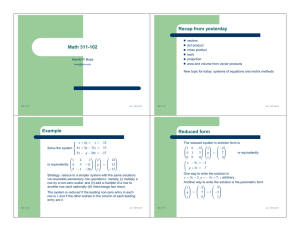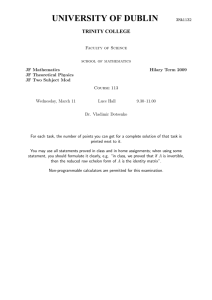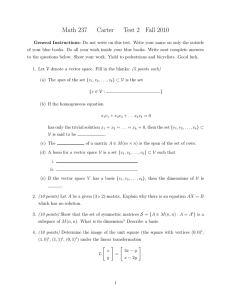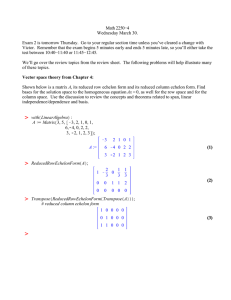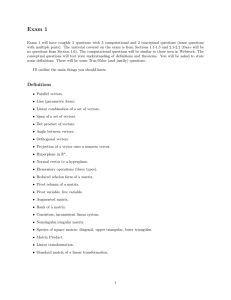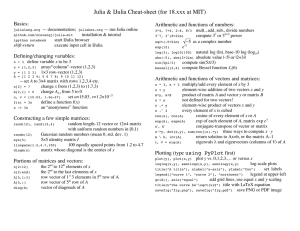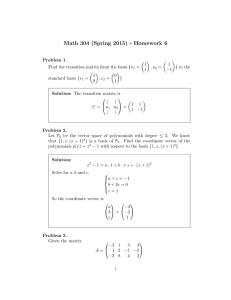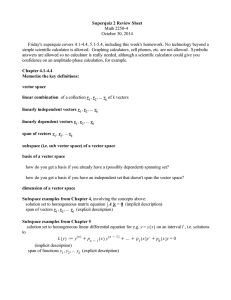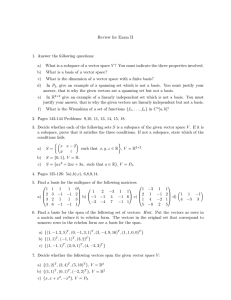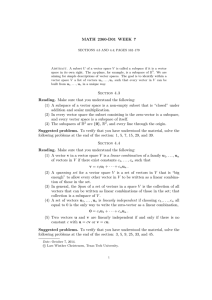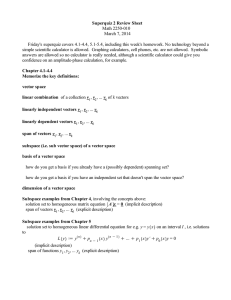MA 1111: Linear Algebra I 1. We have
advertisement
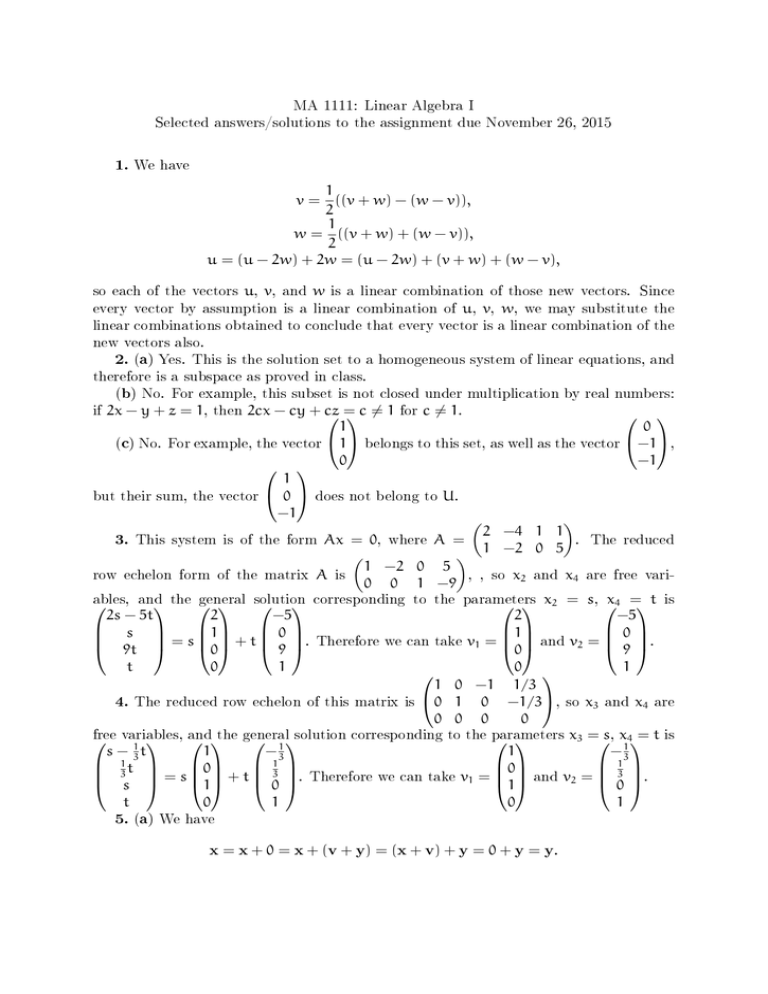
MA 1111: Linear Algebra I Selected answers/solutions to the assignment due November 26, 2015 1. We have 1 v = ((v + w) − (w − v)), 2 1 w = ((v + w) + (w − v)), 2 u = (u − 2w) + 2w = (u − 2w) + (v + w) + (w − v), so each of the vectors u , v, and w is a linear combination of those new vectors. Since every vector by assumption is a linear combination of u , v, w , we may substitute the linear combinations obtained to conclude that every vector is a linear combination of the new vectors also. 2. (a) Yes. This is the solution set to a homogeneous system of linear equations, and therefore is a subspace as proved in class. (b) No. For example, this subset is not closed under multiplication by real numbers: 2cx − cy + cz = c 6= 1 for c 6= 1. 1 0 (c) No. For example, the vector 1 belongs to this set, as well as the vector −1, 0 −1 1 but their sum, the vector 0 does not belong to U. −1 2 −4 1 1 3. This system is of the form Ax = 0, where A = . The reduced 1 −2 0 5 1 −2 0 5 row echelon form of the matrix A is , , so x2 and x4 are free vari0 0 1 −9 ables, and general x4 =t is the solution corresponding to the parameters x2 = s, 2s − 5t 2 −5 2 −5 s 1 0 1 0 9t = s 0 + t 9 . Therefore we can take v1 = 0 and v2 = 9 . t 0 1 0 1 1 0 −1 1/3 0 −1/3, so x3 and x4 are 4. The reduced row echelon of this matrix is 0 1 0 0 0 0 free variables, and the general solution corresponding to the parameters x3 =s, x4= t is 1 1 −3 1 − 31 s − 31 t 1 1 1t 3 = s 0 + t 3 . Therefore we can take v1 = 0 and v2 = 3 . 1 0 1 0 s 0 0 t 1 1 if 2x − y + z = 1, 5. then (a) We have x = x + 0 = x + (v + y) = (x + v) + y = 0 + y = y. (b) We have v + (−1) · v = 1 · v + (−1) · v = (1 + (−1)) · v = 0 · v = 0, (−1) · v + v = 0. (−1) · v = −v. as proved in class. Similarly, proved, is unique, we have Since the opposite element, as we just
